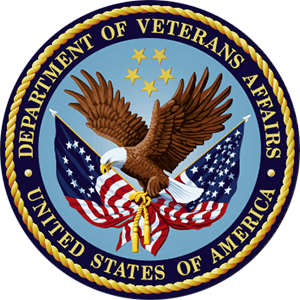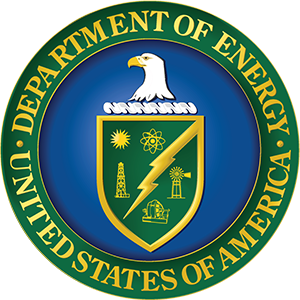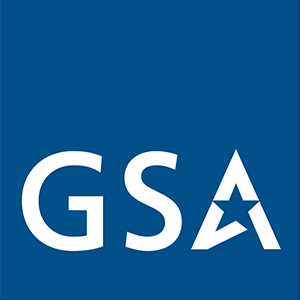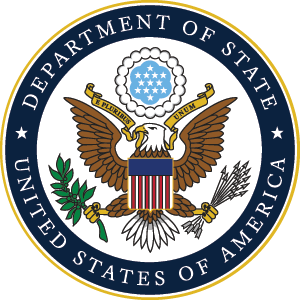by the WBDG Commissioning Committee
Within This Page
Introduction
Building commissioning (Cx) is a professional practice that facilitates the planning, design, construction, installation and testing verification, documentation, and operation of facilities and systems to conform to the Owner's Project Requirements (OPR).
Building commissioning comprises specific phases and activities for both new construction and existing buildings. Whether commissioning new construction or existing buildings, the process includes many incremental activities, usually team-based functions that result in project-specific benefits and documentation.
Cx is the ONLY profession/entity, other than the owner, that is engaged throughout the process of design, construction, delivery, and optimizing performance of facilities. CxPs require a substantial amount of knowledge, skills and experience to be able to recognize, address, and even correct issues, and building/systems performance, through the eyes of every other team member and throughout the project.
This 8–page section of the Whole Building Design Guide (WBDG) presents overall commissioning process information, guidance, challenges, and resources. The first 4 pages are focused primarily on new construction commissioning, followed by pages 5 and 6 which outline the process and guidance for commissioning existing buildings whenever it occurs from initial occupancy through the life of the facility. Pages 7 and 8 describe challenges and further resources for owners, designers, contractors, commissioning providers (CxP), and consultants.
- Building Commissioning: The Process
- Determining Project Performance Requirements
- Roles and Responsibilities in the Commissioning Process
- Commissioning Documents: Process, Contents, and Acceptance
- Existing Building Commissioning
- Ongoing Commissioning
- Commissioning Challenges and Emerging Issues
- Additional Commissioning Resources

Building Commissioning requires a detailed and team oriented process.
Commissioning Benefits and Goals
The ultimate benefit of new facility and system commissioning is the documented performance of the facility and systems as it is transitioned into the long-term operations and maintenance function. Commissioning, used as a more forensic problem identification and solutions-based process, can be applied to an existing facility or system even if not initially commissioned, as described in Existing Building Commissioning.
Commissioning assists in the delivery of a project and helps to provide an efficient, safe and healthy facility; optimizes energy and water use; reduce operating costs; facilitate O&M staff orientation and training; and improve installed building systems documentation and operations. These functions can result in increased profitability in both facility and staff operations.
Commissioning benefits Owners through improved facility performance including higher quality workplace environments, and prevention of potential business losses. The cost of not commissioning is equal to the increased costs of correcting design and construction deficiencies later, plus the costs of inefficient operations. For example, in mission critical facilities, the cost of not commissioning can be measured by the cost of downtime and lack of appropriate facility use.
The primary goal of commissioning any project or system is to ensure that success for the project is clearly defined in the Owner's Project Requirements (OPR) and that the building and systems perform as intended to fulfill that mission. The commissioning process can be applied to an entire facility or to any specific system or assembly if new, upgraded or modified.
In addition to energy efficiency and overall performance drivers, another factor increasing demand for commissioning is the Owner's desire to obtain certification through building performance rating systems. These rating systems have been developed to improve the project planning, design, construction, and performance of energy and water efficiency, environmental conditions in buildings, verification, documentation, and operations practices. A building certified to these rating systems can include highly efficient gas, water, power and lighting systems, solar photovoltaics, and other energy and resource technologies. From an Owner's perspective, investment in these and other sophisticated building technologies must be accompanied by rigorous design and construction quality assurance and performance verification measurement, which are provided holistically through the commissioning process.
The principal goals of building commissioning are to:
- Include the project requirements including the commissioning process in the OPR document.
- Verify that the OPR requirements, including commissioning, are in the project design and construction documents for new projects.
- Facilitate delivery of buildings and construction projects that meet the Owner's Project Requirements.
- Prevent or eliminate problems in a cost-effective manner through proactive quality techniques.
- Verify systems are installed and working as intended and benchmark that operation.
- Provide and collect documentation and records on the design, construction, and testing to facilitate operations and maintenance of the facility.
- Facilitate training functions and system operation documentation and Cx tools for O&M staff performance and implementation of ongoing Cx.
- Lower overall first costs and life-cycle costs for the Owner.
- Maintain facility performance for the building's entire life cycle.
Commissioning Definitions
Commissioning definitions vary slightly based on the project phases and the function of the Cx process in the specific sequence. The commissioning process can be implemented on an entire facility or on specific systems or assemblies as required by the Owner and project.
The following definitions depict commissioning as a holistic process that spans from pre-design planning to occupancy and operations at a minimum and should also include ongoing commissioning. As stated in ASHRAE Standard 202–2018: Commissioning Process for Buildings and Systems, the following definitions are provided:
Commissioning Process (Cx) — all, including New Construction (NCCx): a quality-focused process for enhancing the delivery of a project. The process focuses on verifying and documenting that all of the commissioned systems and assemblies are planned, designed, installed, tested, operated, and maintained to meet the OPR.
Existing-Building Cx (EBCx): a quality-focused process for attaining the Current Facility Requirements (CFR) of an existing facility and its systems and assemblies being commissioned. The process focuses on planning, investigating, implementing, verifying, and documenting that the facility and/or its systems and assemblies are operated and maintained to meet the CFR, with a program to maintain the enhancements for the remaining life of the facility. See Existing Building Cx.
Retro-commissioning (RCx) is commissioning an existing building that has never been commissioned before.
Recommissioning (ReCx) occurs when a building that has already been commissioned undergoes another commissioning process. The decision to recommission may be triggered by a change in building use or Ownership, the onset of operational problems, or some other need.
Monitoring-Based Commissioning (MBCx) utilizes primarily monitored data (versus primarily manual tests and checks) originating from the Building Automation System (BAS) or other meters processed with special analysis tools, sometimes referred to as Energy Management and Information Systems (EMIS).
System-Specific Commissioning is a tailored application focused on a small subset of targeted systems in a building, such as indoor environmental quality or chiller plant efficiency.
Ongoing Commissioning (OCx) continuously gathers data about existing systems and building performance and continuously or regularly evaluates the data to ensure proper operation and to improve performance, usually dependent on hardware and software tracking tools and by a separate contractual arrangement after completion of NCCx or EBCx.
Description
The commissioning process ideally begins at project inception (predesign phase) and continues in phase-specific functions through facility and system operation. It is not a design or construction function, but it assists in and verifies that the results of these functions can produce a facility and systems that meets the requirements for performance. Depending upon the Owner's needs, these might include; functionality, efficiency, sustainability, environmental and health impacts, interior occupancy conditions, resilience, and others that will maximize facility and system profitability for the Owner and the occupants.
Commissioning for new construction typically involves a CxP for all phases until the building is occupied:
Phase 1 — Predesign. It is important to start the commissioning process in the pre-design phase. This early involvement by the CxP is critical for the timely and useful development of the Owner's Project Requirements (OPR), the subsequent design team Basis of Design (BOD), the Commissioning Plan, and the beginning of the Operations & Maintenance (O&M) Systems Manual. If these tasks are left until later in the process and "reverse engineered" to match the design, their usefulness as catalysts for dialog, cost and risk management, and quality tracking tools is lost.
Phase 2 — Design. During the design phase the project design and details are further developed and organized for the construction documents. These documents must be based on the design team's application of the OPR. If questions and variations to these requirements evolve during this phase, it may be necessary to update the OPR with the acceptance of the Owner or representative. The commissioning requirements are further developed during design including the selection of the systems to be commissioned and the specifications detailing the functions of commissioning and the contractor's and manufacturers responsibilities as part of the commissioning team. The commissioning plan is further developed during the design phase to reflect the design and performance requirements of the commissioned systems and the initial development of field observation, functional testing, and performance requirements, along with documentation formats for testing and reporting. During and at the conclusion of project design, the CxP reviews the construction documents to determine compliance to the OPR and inclusion of the commissioning requirements. The CxP design review is intended to verify compliance with the OPR and is not considered a PEER review. Any open issues should be responded to in writing from the designer for design completion.
Phase 3 — Construction. In the construction phase, the commissioning process transitions from planning to application and is active during the entire construction phase. During pre-construction, the commissioning schedules are developed and integrated into the construction schedules. The CxP reviews the submittals for the commissioned systems and further develops the field observation, testing, and functional and performance requirements and checklists in the commissioning plans. The commissioning team is assembled along with the general contractor and relevant sub-contractors, manufacturers, and suppliers and these Cx Team members participate in a project commissioning scoping meeting for training and coordination. Subsequent meetings are conducted as needed, including systems integration meetings for both building controls and other building alarm and operating systems. An issues and resolution log is created by the CxP to communicate problems, concerns, and questions during the project to the Cx team and Owner. This log is updated during the project and the final log is included in the commissioning report. Depending upon the project organization, normally the contractors complete the installation field observations and checklists as required by the commissioning plan. These completed checklists are reviewed by the CxP and any needed adjustments are performed on the Functional Performance Tests (FPT) and schedules. In coordination with the construction schedules, the FPTs are conducted by the contractors along with the CxP as a witness. Based on FPT results, a preliminary commissioning report is drafted and reviewed by the Owner and, if necessary, the local jurisdictions. Any necessary plans for deficiency correction and off-season testing are included.

Reviewing the construction documents and coordinating with the construction team to ensure proper implementation of the project and commissioning plan. Photo Credit: 33684514, Ndoeljindoel/Dreamstime.com
Phase 4 — Hand-Off/Occupancy. At project substantial completion and after conducting operations and maintenance training by the design team (if applicable), contractors, and suppliers, the Owner assumes operational responsibilities for the facility or project. The commissioning process is not complete until the off-season testing is completed and the systems manual is completed and transferred to the Owner. At that time, a final commissioning report is developed including the final issue logs with any open items as accepted by the Owner.
NEW CONSTRUCTION/SYSTEM COMMISSIONING DOCUMENTATION
The new construction commissioning process includes multiple activities performed in a specific sequence. As defined in ASHRAE Standard 202–2018, Commissioning Process for Buildings and Systems, these functions are required to provide a complete commissioning project.
Initiation: The Owner or Owner's representative initiates the commissioning process at the beginning of the project. The roles and responsibilities of the project and commissioning teams are determined. Procedures and contracts are prepared and executed.
Owner's Project Requirements: Next, the project requirements are determined and documented which include the building program, use, scope, and the requirements for performance, sustainability, resiliency, training, testing, commissioning, and documentation. The deliverable for this activity is the Owner's Project Requirements (OPR) document which is the guiding instruction for the project. The OPR is updated throughout the design and construction of the project. See Determining Project Performance Requirements for further information on assembling the OPR.
Commissioning Plan: The initial Commissioning Plan is developed by the CxP that identifies the commissioning scope, roles and responsibilities, communication procedures, and design and construction requirements for providing and integrating commissioning into the project. The Commissioning Plan is updated throughout the project with checklists, schedules, and documentation details. The Owner reviews and accepts this plan.
Basis of Design: The design team determines and documents the design approach to meet the Owner's Project Requirements resulting in the Basis of Design (BOD) document. The CxP reviews the Basis of Design for conformance to the OPR. The Owner reviews and accepts this document before design completion.
Specifications: During the design phase, the contractor commissioning requirements are determined for each system and included in the commissioning specifications for the construction documents package.
Design Review: In the design phase, the CxP reviews the design and documents for conformance to the OPR. This design review also provides details that facilitate the further development of the commissioning plans.
Submittal Review: The commissioning team reviews the materials and equipment submittals for conformance to the OPR and construction documents. The submittals also provide information and details to develop project and commissioning process checklists.
System Verification: As the project is constructed, the commissioning team observes and verifies the installation and performs or witnesses the equipment start up and initial testing. Checklists and reports are prepared as required by the commissioning plan.
Functional Performance Testing (FPT): Functional and performance testing is conducted according to the commissioning plan to verify performance compliance with the OPR and design documents.
Issues and Resolution Log: Issues and resolution of issues are identified and documented by the commissioning team in the Issues Log along with related documentation. This log is a communication device for questions and problems from all the commissioning team participants that need solutions to facilitate successful project completion.
Systems Manual: During the design and construction of the project, the design and construction and verification documents are assembled into the systems manual. This assembly is normally performed by the general contractor or PM. This assembly of documents provides the details and history of the design and construction of the building and information needed to properly operate and maintain the building. The commissioning reports are included in the final Systems Manual.
Training: Training of facility staff should be pervasive throughout the commissioning process. At the hand-off/turnover phase, formal training ensures that operations and maintenance staff understand the equipment and systems. Training activities ensure that operators understand the theory ("why") as well as how to control and maintain the systems ("how") to operate and use the building in accordance with the OPR and design capabilities, the building operational staff and users are trained on the installed equipment and systems.
Seasonal or Deferred Testing: Commissioning activities that were not performed due to climatic conditions or equipment availability before initial certificate of occupancy are conducted during post occupancy. The final testing results are included in the final commissioning report and systems manual.
Commissioning Report: At the time of granting a facility Certificate of Occupancy a preliminary commissioning report is prepared that shows the commissioning progress and equipment performance to date. At the completion of the project, the final commissioning report is assembled and provided to the Owner and others as required by the OPR and local jurisdiction requirements.
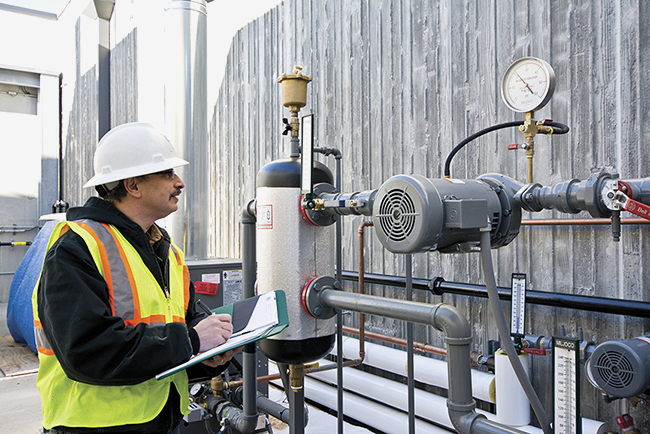
Careful observation is an essential component of the documentation process during commissioning.
COMMISSIONING PROCESS MANAGEMENT
The facility or project Owner, or representative, defines and manages the process and reviews the documents. During project planning, the Owner also defines the extent and requirements of the commissioning process along with the basic commissioning team functions and responsibilities. Those functions are further defined in Roles and Responsibilities in the Commissioning Process.
The CxP normally reports to the Owner or Owner's Representative. This relationship and the contract need to be established at the beginning of the project. The function of commissioning is to assure the Owner that they are receiving true and full value in the function and performance of the commissioned systems. Thus, the reporting relationship to the Owner reduces or eliminates the possibility of a conflict of interest by the CxP.
Application
Building and/or System Commissioning Initiation
Engaging the CxP at the beginning of the project allows the CxP to become familiar with programming documents and proceed immediately to the OPR workshop and the development of the whole building criteria that match the project needs including facility certifications such as LEED®, Green Globes, Living Building Challenge, WELL, among others, and jurisdictional requirements. The OPR should be developed during the pre-design phase. When developed first, the OPR can become a very useful tool to the Owner in selecting the correct design and construction team for the project. During the selection process of the design team, candidates' responses to the OPR when submitting their BOD provides tremendous insight into their understanding of the OPR.
When the Systems Manual requirements are also started at this early stage, the inclusion of O&M requirements is facilitated. The inclusion of O&M planning in the early phases is key to the long-term persistence of energy efficiency, equipment longevity, and whole building performance strategies built into the design.
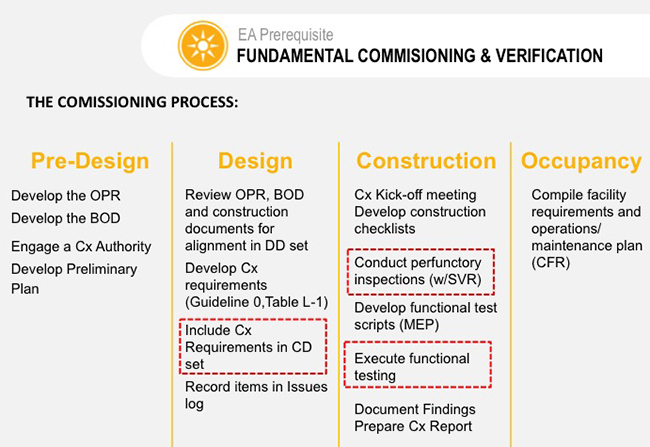
Sample commissioning process as outlined in ASHRAE Guideline 0 that informs NIBS Guideline 3, the basis for LEED Enclosure Commissioning. Photo Credit: USGBC
Determining Project Performance Requirements
Every new project goes through pre-design and design phases that establish an Owner's needs, goals, scope, and design solutions for a proposed project. Proposed designs and constructed work can only be evaluated against objective criteria and measures that are embodied in a well-documented OPR. Project development is a learning process where building performance decisions are refined to successive levels of detail over the course of a project's life cycle. This may also include possible future programs such as solar, recycling, and new technology.
The project performance requirements are defined and assembled in the OPR document. The OPR is also the foundation document of successful Cx. It is critical in ensuring the commissioning process meets the Owner's goals. The OPR defines the cost expectations, performance goals, energy and operational benchmarks, high-level schedule dates, operational approaches, and success criteria for the project. Owner staffing plans for the facility should be clearly identified so any impact on the design of the facility systems is known. The OPR must be developed with significant Owner input and ultimate acceptance. The CxP typically assists the Owner in identifying the facility's requirements regarding such issues as energy efficiency, indoor environment, staff training, and operations and maintenance. An effective OPR incorporates input early in the project from the Owner, operations and maintenance staff, and end users of the building, and is updated throughout the project. A properly developed and updated OPR truly becomes the definition of success for a project.
Defining Cx Requirements for a Project
The commissioning process can be applied to an entire facility or project or to limited and specific equipment and assemblies. The specific commissioning application is defined in the OPR. Subsequently creating the Commissioning Plan (Cx Plan) will answer the questions and set the criteria for the commissioning process on the project.
Key project requirements and related commissioning activities include:
- Establish goals for project quality, efficiency, certifications, and functionality of commissioned systems
- Establish a commissioning scope
- Establish commissioning budgets
- Assign team members and responsibilities
- Establish commissioning plans
- Establish commissioning schedules
- Establish testing and field observation plans
- Develop commissioning specifications
- Determine scope and content of commissioning documentation and reports
- Define special testing needs
- Develop Systems Manual format and requirements
- Determine operational staff training needs
- Establish ongoing building commissioning (OCx) plans and requirements
The project requirements and the systems and assemblies selected for commissioning determine basic commissioning functions and requirements. Additionally, the Owner can require variations and options in the requirements, such as sampling or specific testing, when needed on a specific function or project.
Project Documentation, Records, and Acceptance
The purpose of commissioning documentation is to serve as the historical record of the "what, why and how to" of key delivery team decisions throughout the planning and delivery process. Commissioning documents the establishment of standards of performance for building systems and verifies that designed and constructed work meets those standards. Key commissioning deliverables supporting Document Compliance and Acceptance are included above in the New Construction/System Commissioning Documentation section, and in Commissioning Documents: Process, Contents, and Acceptance.
Additional Resources
See the Additional Commissioning Resources page for more information.


